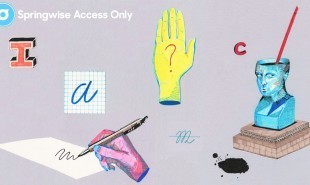
The Thinking Hand: How working by hand can improve cognitive thinking
“The hand often takes the lead in probing for a vision of the vague inkling that it eventually turns into a sketch, a materialization of an idea.” — Juhani Pallasmaa.
With technology now offering faster, more efficient ways of creating, the need for writing and drawing by hand is quickly diminishing — when was the last time you wrote something longer than a grocery list?
But what of it? Many of us believe that typing allows us more time to think. However, psychologists and neuroscientists are discovering that writing by hand can actually increase our cognitive thinking. “Handwriting is a complex task which requires various skills — feeling the pen and paper, moving the writing implement, and directing movement by thought,” says a professor of developmental psychology.
What’s more, the paper offers greater freedom — one can invent different fonts, insert bespoke sketches and come up with formats that are not programmed in a computer. There is also a visual record of your creative process: where you crossed out words, changed around sentences, or developed an idea from A to B.
Forming the sequential strokes of a letter activates massive regions involved in thinking, language and memory. It’s true that adults and children alike learn a language faster through writing by hand, as it allows for better recognition — our brain has to understand that any iteration of a letter ‘a’ means the same. It is the reason why stroke patients are told to trace letters to help them remember the alphabet.
Of course, writing and drawing everything by hand can be time consuming, but there are still efficient ways we can implement a thinking hand in our modern office. Here are this month’s Innovation Culture Five for you to try.
1. No laptop/mobile/tablet meetings. Students who take notes by hand proved to have better understanding of a class — writing down words required the processing of information, which, unlike transcribing, improved long term memory. Of course, the advantage of typing up notes during a meeting is that it saves time typing them up later. However, by designating one person to take minutes, using something like the Springwise-featured Mod Notebook (a physical book that syncs to the cloud), you’ll immediately free up everyone else’s hands for writing down any other ideas.
2. Try implementing a one-hour a week “no tech rule”. By removing access to computers, phones and emails, space is created for staff to think more strategically and creatively about long-term goals. What’s more, they’ll be forced to work by hand, using pen and paper. When doing this yourself, we’d encourage you to create different fonts for distinctive topics, or to fill up the margins with sidetracked notes. Most of all, take note of your creative process, and try to learn from the way you developed your ideas. A study of 2,000 Britons showed that in the past six months, two thirds had not written anything properly by hand, so you may be surprised by the dormant creativity lying in your hands…
3. Handwritten notes for press releases, new business pitches, or sending physical mail to say thank you to a client. Embedded in our handwriting is our individual personality and emotion — there’s a sincerity that its digital counterpart lacks. Spring, the hugely successful mobile shopping app, sends customers a handwritten note with every purchase to make up for the absence of personal interaction when shopping online.
4. Present with tools that allow for writing and drawing. Something like Smartkapp, a whiteboard that automatically syncs meeting notes with colleagues’ devices could be useful — it combines the creative advantages of working by hand with the efficiency of working digitally.
5. Try printing off documents to analyze and work from. Physically marking important phrases and keywords, as well as penning your own notes may lead to more efficient understanding of the information. We know that this raises sustainability concerns, so perhaps try printing with recycled paper, or have a look at Springwise-featured Print A Forest — a free application which, for every 100 pages printed, donates money towards the planting of a tree.
Following on from last month’s Innovation Culture playlist, we’re once again sharing some music from the Springwise office via Spotify. If you have any thoughts, ideas — or groundbreaking fonts — please feel free to get in touch.




